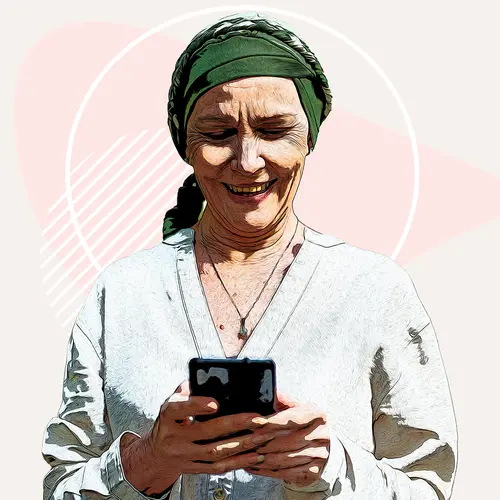If you’ve been diagnosed with breast cancer, your focus will be on getting the right treatment, but you’ll wonder, too, about your chances of surviving. Your doctor may call this your prognosis. It’s an estimate of how the disease will go for you. It’s just that -- an estimate, or an educated guess.
Every situation is different. Your doctor is the best person to help you understand your prognosis. Some of the things they will think about include:
- The type of breast cancer you have
- The stage of the cancer, or where it is and how big it is
- The grade of the cancer, which is how fast it’s growing
- Other details about the cancer cells, such as the amount of DNA changes in them, whether they have hormone receptors and gene expression test results
- Your age and overall health
- How the cancer responds to treatment
What Are Cancer Survival Statistics?
A key part of making a prognosis is looking at survival rates. These are numbers researchers collect over many years in people with the same type of cancer. These numbers are based on large groups of people. For breast cancer, there are two main measurements:
Breast cancer survival rates reflect the percentage of women who are alive 5 years or longer after their diagnosis. This means the numbers are based on women who were found to have breast cancer at least 5 years ago. Advances in diagnosing and treating cancer have led to steadily improving survival rates, so the outlook for women diagnosed today is likely better.
Relative survival rates don’t take into account the cause of death. They’re a measure of the percentage of people with cancer who have lived for a certain time after diagnosis, compared with people who did not have cancer.
Breast Cancer Survival Rates
The overall 5-year relative survival rate for breast cancer is 91.2%. This means that about 91 out of 100 women are alive 5 years after they’ve been diagnosed with breast cancer.
The 10-year breast cancer relative survival rate is 84% (84 out of 100 women are alive after 10 years). The invasive 15-year breast cancer relative survival rate is 80% (80 out of 100 women are alive after 15 years).
Relative Survival Rate by Stage
The survival rates by stage are based on the stage at the time of diagnosis. You’ve probably been given a number and letter for your cancer stage. Here, the terms localized, regional, and distant are used instead of numbers and letters. Here’s what they mean and the 5-year relative survival rates for each:
- Localized breast cancer is only in the breast. This includes stage IA (pronounced “stage 1-A”), some IIA (“stage 2-A”), and some IIB (“stage 2-B”). The 5-year relative survival rate is 99%.
- Regional breast cancer has spread to nearby tissue or lymph nodes. This includes stage IB (pronounced “stage 1-B”), some IIA (“stage 2-A”), some IIB (“stage 2-B”), and all stage III (“stage 3”). The 5-year relative survival rate is 86%.
- Distant breast cancer has spread to other parts of the body. This includes stage IV, pronounced “stage 4”). The 5-year relative survival rate is 31%.
Relative Survival Rate by Age
Five-year relative survival rates by age at the time of diagnosis are as follows:
- Women younger than 45: 88%
- Ages 45-54: 91%
- Ages 55-64: 91%
- Ages 65-74: 92%
- Women 75 or older: 86%
Combining the Stats
Another way to look at 5-year relative survival rate is by putting together age and stage. Age at the time of diagnosis is broken into two groups: women under 50 and women 50 and older. These numbers are:
- Localized breast cancer: stage IA (pronounced “stage 1-A”), some IIA (“stage 2-A”), and some IIB (“stage 2-B”)
- Younger than 50: 97%
- 50 and up: 99%
- Regional breast cancer: stage IB (pronounced “stage 1-B”), some IIA (“stage 2-A”), some IIB (“stage 2-B”), and all stage III (“stage 3”)
- Younger than 50: 87%
- 50 and up: 85%
- Distant breast cancer (stage IV, pronounced “stage 4”)
- Younger than 50: 38%
- 50 and up: 26%
These numbers can be confusing. But they factor in a lot of information. For instance, it may be surprising that women with localized breast cancer who are younger than 50 have a lower 5-year relative survival rate than women ages 50 and up. Younger women are less likely to be diagnosed at an early stage compared to older women. They’re also less likely than older women to have hormone-receptor-positive breast cancer, which means hormone treatment isn’t a good option for them.
Statistics are averages. They don’t tell the whole story. And they certainly don’t tell your story. Ask your doctor to explain cancer survival statistics and how they may apply to your situation. But keep in mind, there’s no person or number that can exactly predict what will happen to you.

